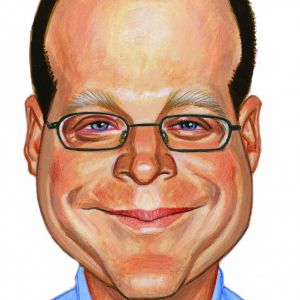Seven Steps to Build a Successful Brand with Holistic Principles Creating a brand that stands out in today's competitive market requires passion, authenticity, and a deep understanding of your mission.
Opinions expressed by Entrepreneur contributors are their own.
You're reading Entrepreneur United Kingdom, an international franchise of Entrepreneur Media.

Charlotte Yau, founder of Muihood, a London-based skincare brand that blends traditional Chinese medicine (TCM) with modern skincare practice, offers valuable insights on building a business rooted in traditional practices while appealing to modern consumers. Here's how you can take a page from her journey to establish your own successful venture.
1. Find your inspiration and purpose
Yau's journey began with personal struggles with skin issues, leading her to discover the transformative power of TCM. "Growing up, TCM was the only thing that helped me understand the root cause of my skin issues," she explains. This realisation inspired her to create Muihood, a brand that honours TCM, with its 3,000-year history, holistic approach to skincare. Aspiring entrepreneurs can draw from their own experiences to identify market gaps that truly resonate with them, as personal stories often serve as powerful drivers for business ideas.
2. Educate your audience and demystify your niche
Blogs, social media, or community workshops can engage and inform your audience, establishing credibility and trust. One of Yau's biggest challenges was the misconception of TCM as merely a trend. "It was often branded as a fad, with jade rollers being the focal point," she shares.
To combat this, she focused on educating consumers about TCM's deeper benefits by developing content that told her story and explained the unique aspects of her product or service. "We work with amazing qualified Chinese Medicine practitioners to help unpack the deeper learnings of TCM and make it easy to understand for our community. Through a combination of storytelling and industry-first formulations, Muihood began to shift the narrative and appeal to consumers who were genuinely interested in skin longevity and understanding their bodies better," she adds.
3. Secure funding strategically
Start small by reinvesting your profits and exploring funding options- one of these could be to bootstrap and build relationships from scratch. Yau too initially bootstrapped her business, pouring her own resources into product development. She later secured funding through friends and family who shared her vision: "I closed a friends/family and community round who believed in TCM's potential in modern skincare," she recalls. Muihood also won the gold prize in an AXA start-up angel competition, which helped gain more visibility and resources to grow the brand.
4. Stay true to your mission; authenticity is key
The entrepreneur advises others to regularly revisit their mission statement and ensure decisions align with it. This will keep the brand focused and messaging consistent.
In the early stages, Yau emphasised the importance of remaining authentic to her mission. "In the beginning, there will be distractions, trends, and shortcuts, but your unique story and purpose are what will set you apart," she advises.
5. Develop a supportive network and lean on community
Yau credits her resilience to her strong support network, including fellow entrepreneurs who understand the highs and lows of running a business.
Recommending other founders to connect with other entrepreneurs through networking events, online communities, or local meetups, Yau believes a supportive network offers advice, encouragement, and accountability.
"My friends, and also having founder friends who can truly understand the highs and lows of running a business," Yau says. "Their shared experiences and advice provide immense strength during tough times."
6. Implement a productivity framework
To tackle the myriad of responsibilities that come with running a business, Yau uses the 3-3-3 Method from Oliver Burkeman's Four Thousand Weeks. "It involves breaking your day into three main tasks, three smaller tasks, and three maintenance tasks," she explains.
She encourages other entrepreneurs to implement a similar system to structure their daily activities. This can help maintain focus and make progress without feeling overwhelmed by the workload.
7. Debunk startup myths- start small
Yau emphasises that you don't need huge funding to begin. "One common myth is that you need perfect conditions or significant funding to get started. In reality, you can begin small and grow organically," she shares.
Yau also advises to embrace the idea that you can start small. Focus on your vision, learn as you go, and adapt to challenges rather than waiting for the "right" moment to act.
"It's more important to have a clear vision and the persistence to keep going, rather than waiting for everything to fall into place," she continues. "You'll learn and adapt as you move forward, and success often comes from being resourceful and resilient rather than having all the resources and answers upfront."
Building a successful brand requires resilience, education, and a clear mission. By following these actionable steps inspired by Yau's journey with Muihood, you can carve out your niche in the market and create a meaningful impact with your business.
As Yau puts it, "Consistency and authenticity will get you there." Embrace your passion, and let it guide you on your entrepreneurial journey.












